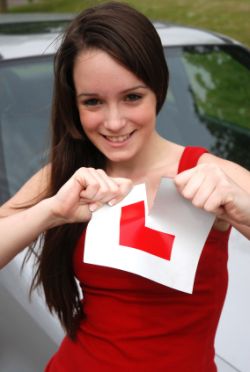Tips on braking on snow and ice
Braking on snow and ice takes a lot longer than it does on a normal road in ordinary conditions. But you might be very surprised at how long it can take.
Infact tests have shown that it can take over 10 times the distance to stop on snowy and icy conditions than it does in ordinary road conditions! This is because there is so much less grip between the wheels and the road, and therefore it takes a much greater distance to reduce your speed when travelling over it in those conditions.
This is why pile ups are so common in these sort of conditions, because cars following are not able to brake in time with the stopping distances being increased so much so they all go in the back of each other.
When you do brake, you must also be gentle - because anything else would lead to the wheels locking. A good technique is to start braking earlier than you would normally and make it gentle, then change down gear into a lower gear sooner than you normally would.
Note that if conditions are bad of course the first thing to consider is whether a journey is absolutely essential; if not then turn back and in certain conditions even if you think the journey is essential it is best not to try and make it at all.
Related Articles...
DSA Driving Theory Test
Do not view the DSA Driving Theory Test as something of an inconvenience. Instead view it as a way to develop useful knowledge that could save your life or that of someone else. If that seems like...
What to do with keep clear markings
Keep clear markings are quite straightforward to understand, although amazingly some people either ignore them or do not appear to understand what they mean!
You will often seen keep clear...
Reversing Exercises in the driving test
There are three reversing exercises that you could be tested on in the driving practical test.
You will be asked to perform two out of these three so that the person undertaking your test (the...
Mock Driving Theory
On our Mock Driving Theory page you can practice no fewer than fifteen different mock tests.
Each of them...
What's the point of the theory test?
The official theory test is a relatively recent addition to the driving test, and has evolved and become more comprehensive over time. For many of us who ask our parents about the driving test,...
Rules for learner drivers
The minimum ages and restrictions vary from one type of vehicle to another.
When you are learning to drive, you must ensure that the vehicle you are learning to drive in is roadworthy and also...
Working out what a road sign means
There are many signs that you will see day in day out as a driver and are obvious to understand. For instance signs that tell you the maximum speed limit on the road you're on. For some reason,...
The ABC of dealing with casualties
The ABC refers to how to treat casualties if you are involved in an accident but not injured, or indeed if you are at the scene where an accident occurs.
The A refers to the word airway. This...
Typical brake faults outlined
The brakes are a mechanical object and so it is possible that they will develop problems and not function the way that they should be. This is clearly very dangerous because brakes are one of the...
Driving Theory Stopping Distances
Stopping distances refer to the distance that you car is going to travel from the time that you decide that you need to press the brake through the time that the vehicle physically stops...
Back to home page of driving theory test questions

